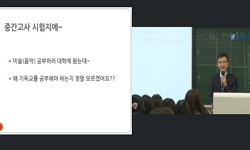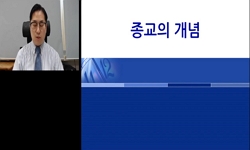The ultimate god of the contemporary Hinduism, ?iva was a minor god in the ?g Veda. But he has changed along the lines of the Yajur Veda ?atarudriya hymn and has grown progressively sinister till his original appearance remains. Gradually epithets are...
http://chineseinput.net/에서 pinyin(병음)방식으로 중국어를 변환할 수 있습니다.
변환된 중국어를 복사하여 사용하시면 됩니다.
- 中文 을 입력하시려면 zhongwen을 입력하시고 space를누르시면됩니다.
- 北京 을 입력하시려면 beijing을 입력하시고 space를 누르시면 됩니다.
https://www.riss.kr/link?id=A76359411
- 저자
- 발행기관
- 학술지명
- 권호사항
-
발행연도
2009
-
작성언어
Korean
- 주제어
-
등재정보
KCI등재
-
자료형태
학술저널
- 발행기관 URL
-
수록면
79-102(24쪽)
-
KCI 피인용횟수
2
- 제공처
-
0
상세조회 -
0
다운로드
부가정보
다국어 초록 (Multilingual Abstract)
Coming chronologically after B?had?ra?yaka Upani?ad and Ch?ndogya Upani?ad, but preceeding the Bhagavad G?t?, ?veta?vatara Upani?ad represents a stage of development in Indian religions. Here, Rudra???iva, the Supreme Being, bears both the perishable and the imperishable, the manifest and unmanifest. It is in this connection worth noticing that the text significantly uses the verb, ??ate, 'the Lord' to express the supreme ruling of a Lord.
The Supreme Being here is represented as emanating and withdrawing the world, the goal of that identificatory ‘meditation' which leads to complete cessation from all phenomenal existence. That means that here some of the most salient features in the character of the post??Vedic ??vara are indicated with all distinctness desirable.
The most central theme in the Upani?adic texts was positioned around the sacrificial rituals. It was conceded as an act of society, but at the same time was doubted as the sole means of self??realization. It arose at this time because with the waning of the power of tradition, ideas were opened to challenge and began to compete. The sacrificial ritual was to become a major point of controversy in the germination of new ideas as suggested by the evidence of the Upani?ads.
The questioning of the sacrificial ritual and its replacement by yoga and dhyana as well as by the secret doctrine as it is described in the texts of the Atman and the Brahman, has its own historical value given the role of the ritual in social and economic processes. In such context, ?iva rose in the position of the Supreme??Being as the eternality and unperishable. And this idealism had played a key role to maintain varna divided ancient Indian society.
The ultimate god of the contemporary Hinduism, ?iva was a minor god in the ?g Veda. But he has changed along the lines of the Yajur Veda ?atarudriya hymn and has grown progressively sinister till his original appearance remains. Gradually epithets are heaped on contradictory epithets until the picture becomes utterly blurred, undistinguished and unconvincing. ?atarudriya hymn begins with an antiphonal praise to the wrath of Rudra. It offers praise to his arrow and bow, praise also to the healer, and hail to him, the pursuer, “dreadful and destructive like a fierce wild beast" himself wearing a garment made of skin hail to the slayer.
Coming chronologically after B?had?ra?yaka Upani?ad and Ch?ndogya Upani?ad, but preceeding the Bhagavad G?t?, ?veta?vatara Upani?ad represents a stage of development in Indian religions. Here, Rudra???iva, the Supreme Being, bears both the perishable and the imperishable, the manifest and unmanifest. It is in this connection worth noticing that the text significantly uses the verb, ??ate, 'the Lord' to express the supreme ruling of a Lord.
The Supreme Being here is represented as emanating and withdrawing the world, the goal of that identificatory ‘meditation' which leads to complete cessation from all phenomenal existence. That means that here some of the most salient features in the character of the post??Vedic ??vara are indicated with all distinctness desirable.
The most central theme in the Upani?adic texts was positioned around the sacrificial rituals. It was conceded as an act of society, but at the same time was doubted as the sole means of self??realization. It arose at this time because with the waning of the power of tradition, ideas were opened to challenge and began to compete. The sacrificial ritual was to become a major point of controversy in the germination of new ideas as suggested by the evidence of the Upani?ads.
The questioning of the sacrificial ritual and its replacement by yoga and dhyana as well as by the secret doctrine as it is described in the texts of the Atman and the Brahman, has its own historical value given the role of the ritual in social and economic processes. In such context, ?iva rose in the position of the Supreme??Being as the eternality and unperishable. And this idealism had played a key role to maintain varna divided ancient Indian society.
목차 (Table of Contents)
- Ⅰ. 머리말
- Ⅱ. 베다 시대의 사회 변화와 루드라-쉬바의 성장
- Ⅲ. 베다후(post-Vedic) 시대 반(反)제사와 우빠니샤드
- Ⅳ.『슈웨따슈와따라 우빠니샤드』와 지존위 쉬바 담론의 형성
- Ⅴ. 맺음말
- Ⅰ. 머리말
- Ⅱ. 베다 시대의 사회 변화와 루드라-쉬바의 성장
- Ⅲ. 베다후(post-Vedic) 시대 반(反)제사와 우빠니샤드
- Ⅳ.『슈웨따슈와따라 우빠니샤드』와 지존위 쉬바 담론의 형성
- Ⅴ. 맺음말
- 【Abstract】
참고문헌 (Reference)
1 이기연, "힌두교. 사상에서 실천까지" 산지니 246-, 2008
2 이재숙, "우파니샤드 I & II" 한길사 1996
3 J. Gonda, "Viṣṇuism and Śivaism. A Comparison" Munshiram Manoharlal 1976
4 R.G. Bhandarkar, "Vaisnavism, Saivism and Minor Religious Systems, 1913. reprint" Asian Educational Services 1982
5 S. Radhakrishnan, "The Principal Upaniṣads" George Allen & Urwin 1953
6 Wendy Doniger O'Flaherty, "The Origin of Heresy in Hindu Mythology" 10 (10): 271-333, 1971
7 S. Bhattacharji, "The Indian Theogony: A Comparative Study of Indian Mythology from the Vedas to the Purāṇas" Firma KLM 1978
8 K.M. Shrimali, "The Age of Iron and the Religious Revolution c. 700 c. 350 B.C" Tulika Books 145-, 2007
9 D.D. Kosambi, "Myth and Reality" Popular Prakashan 2-, 1962
10 Marshall, "Mohenjo-Daro and the Indus Civilization, 3 vols" University of Oxford Press 1931
1 이기연, "힌두교. 사상에서 실천까지" 산지니 246-, 2008
2 이재숙, "우파니샤드 I & II" 한길사 1996
3 J. Gonda, "Viṣṇuism and Śivaism. A Comparison" Munshiram Manoharlal 1976
4 R.G. Bhandarkar, "Vaisnavism, Saivism and Minor Religious Systems, 1913. reprint" Asian Educational Services 1982
5 S. Radhakrishnan, "The Principal Upaniṣads" George Allen & Urwin 1953
6 Wendy Doniger O'Flaherty, "The Origin of Heresy in Hindu Mythology" 10 (10): 271-333, 1971
7 S. Bhattacharji, "The Indian Theogony: A Comparative Study of Indian Mythology from the Vedas to the Purāṇas" Firma KLM 1978
8 K.M. Shrimali, "The Age of Iron and the Religious Revolution c. 700 c. 350 B.C" Tulika Books 145-, 2007
9 D.D. Kosambi, "Myth and Reality" Popular Prakashan 2-, 1962
10 Marshall, "Mohenjo-Daro and the Indus Civilization, 3 vols" University of Oxford Press 1931
11 R.S. Sharma, "Material Culture and Social Formation" MacMillan 8-, 1983
12 Romila Thapar, "Ideology and the Upanisads in: Society and Ideology in India. Essays in Honour of Professor R.S. Sharma" Munshiram Manoharlal 12-, 1996
13 W.J. Wilkins, "Hindu Mythology:Vedic and Puranic, reprint" D.K.Printworld 2003
14 Nilima Chitgopekar, "Encountering Śivaism: The Deity, the Millieu, the Entourage" Munshiram Manoharlal 22-, 1998
15 Asko Parpola, "Deciphering the Indus Script" Cambridge University Press 248-250, 1994
16 Romila Thapar, "Dana and Dakṣiṇā as Forms of Exchange in: Ancient Indian Social History: Some Interpretations" Orient Longman 111-112, 1978
17 J. Gonda, "Change and Continuity in Indian Religion, Indian edn" Munshiram Manoharlal 132-133, 1985
18 "Asceticism and Eroticism in the Mythology of Śiva" Oxford University Press 1973
19 Gavin Flood, "An Introduction to Hinduism" Cambridge University Press 1996
동일학술지(권/호) 다른 논문
-
- 부산경남사학회
- 구완회(Ku Wanhoe)
- 2009
- KCI등재
-
- 부산경남사학회
- 김성은(Kim Sung-Eun)
- 2009
- KCI등재
-
- 부산경남사학회
- 김성한(Kim Sung-Han)
- 2009
- KCI등재
-
- 부산경남사학회
- 全永燮(Jun Young-Seop)
- 2009
- KCI등재
분석정보
인용정보 인용지수 설명보기
학술지 이력
| 연월일 | 이력구분 | 이력상세 | 등재구분 |
|---|---|---|---|
| 2027 | 평가예정 | 재인증평가 신청대상 (재인증) | |
| 2021-01-01 | 평가 | 등재학술지 유지 (재인증) |  |
| 2018-01-01 | 평가 | 등재학술지 유지 (등재유지) |  |
| 2015-01-01 | 평가 | 등재학술지 유지 (등재유지) |  |
| 2011-01-01 | 평가 | 등재학술지 유지 (등재유지) |  |
| 2009-01-01 | 평가 | 등재학술지 유지 (등재유지) |  |
| 2006-01-01 | 평가 | 등재학술지 선정 (등재후보2차) |  |
| 2005-01-01 | 평가 | 등재후보 1차 PASS (등재후보1차) |  |
| 2003-01-01 | 평가 | 등재후보학술지 선정 (신규평가) |  |
학술지 인용정보
| 기준연도 | WOS-KCI 통합IF(2년) | KCIF(2년) | KCIF(3년) |
|---|---|---|---|
| 2016 | 0.52 | 0.52 | 0.56 |
| KCIF(4년) | KCIF(5년) | 중심성지수(3년) | 즉시성지수 |
| 0.65 | 0.67 | 1.012 | 0.29 |




 DBpia
DBpia



